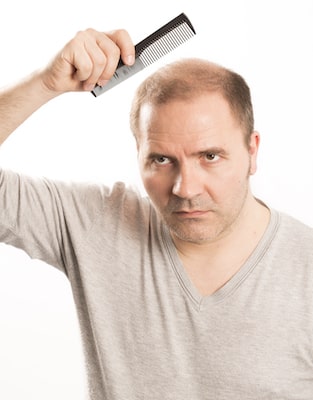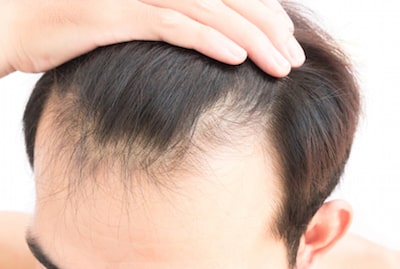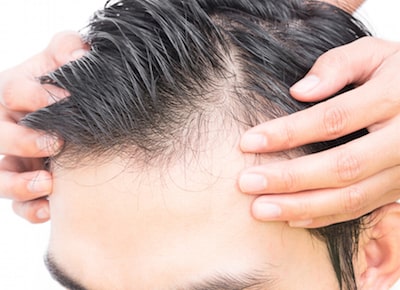Learn Why People are Investing in Hair Restoration

As people continue to age, they will likely suffer some amount of hair loss. Hair loss can start as early as the late teens and early 20s for some people while others experience hair loss later in life. Some of the reasons for bald spots appearing on the scalp include genetics, stress and autoimmune disease. Whatever the reason for the hair loss on the scalp, the idea of going bald can be a devastating one for both men and women. The desire to gain a full and healthy hairline has led many people to invest in having a hair transplant procedure.
Hair Restoration Market – Reasons for Future Growth
As recently as 2018, the hair restoration market was estimated to be worth 8-billion dollars, A new report from Grand View Research shows the hair restoration market is expected to be worth 13.6-billion dollars by 2028.
Since it is obvious that the demand for hair restoration services is growing in popularity, let’s take a look at why so many patients want to achieve their desired hairline:
 A hair transplant is a permanent solution for patients that are suffering from hair loss. Once the thinning or balding spots on the scalp become visible to others, most people of either gender search out a solution to reverse, stop or eliminate both the cause and visible results of the hair loss. A hair transplant takes hair from one part of the body (normally the donor area on the scalp) and transplants the hair grafts to the balding sections of the scalp. The hair grafts are usually removed from the donor area of the scalp as the hair in this area is usually resistant to balding. If there are not enough high-quality hair grafts available in this section of the body, the surgeon can take hair from other areas of the body such as the beard or chest and transplant it to the scalp. The final results are natural in appearance and they last a lifetime. Plus, there are multiple hair transplant techniques available to patients so the doctor can discuss them after performing a consultation appointment in order to determine the cause of the hair loss as well as evaluate the overall health of the patient.
A hair transplant is a permanent solution for patients that are suffering from hair loss. Once the thinning or balding spots on the scalp become visible to others, most people of either gender search out a solution to reverse, stop or eliminate both the cause and visible results of the hair loss. A hair transplant takes hair from one part of the body (normally the donor area on the scalp) and transplants the hair grafts to the balding sections of the scalp. The hair grafts are usually removed from the donor area of the scalp as the hair in this area is usually resistant to balding. If there are not enough high-quality hair grafts available in this section of the body, the surgeon can take hair from other areas of the body such as the beard or chest and transplant it to the scalp. The final results are natural in appearance and they last a lifetime. Plus, there are multiple hair transplant techniques available to patients so the doctor can discuss them after performing a consultation appointment in order to determine the cause of the hair loss as well as evaluate the overall health of the patient.- Another reason patients want to undergo hair restoration is to gain more self-confidence and a better self-image. Some men simply shave their head once they start to develop bald spots on the scalp. Female patients often turn to hats or wigs to cover up thinning areas on top of the head. All of these methods are temporary solutions that do not eliminate the daily worry about even greater amounts of hair falling out of the scalp. Restoring the hair on the scalp can give a person a more youthful look and also give them more confidence in their daily life and also in the workplace.
- Once the hair transplant is performed, the patient does not need to worry about any extra costs to maintain the newly grown hair. Hair restoration options such as minoxidil and finasteride need to be performed on a regular basis in order to maintain the results. If these medical treatments are not performed on a regular schedule, the patient will eventually lose the gains they have made on their scalp. A hair transplant can take over a year before the final results are visible, but the patient will not need to worry about applying any lotions or creams to the treated area of the scalp.
- The cost of a hair transplant might seem high compared to using medications like minoxidil or finasteride but, as noted above, these treatments need to be performed on a regular basis. The need to use these medical treatments each day means the patient will have to pay for the medication over and over again which adds up as time passes. While a hair transplant might be a larger amount of money to spend at one time, the total price of daily treatments and lotions might end up costing more over time.
It should be noted that some patients might need an additional hair transplant in the future. While the hair that is transplanted to the scalp will be resistant to balding, the loss of hair can continue to occur on other sections of the scalp. It is not required for anyone to undergo multiple hair transplants, but it is a possibility for the future.
Hair Restoration Consultation Appointment
Now that the reasons for a hair transplant have been shared above, it is time for some patients to take the next step in the hair restoration process. Anyone that is interested in having a hair transplant is invited to contact our office today to schedule a consultation appointment. Our team of doctors will examine the scalp to determine the reason for the hair loss along with discussing the desired final results with the patient. Once the doctor and the patient are in final agreement about the type of realistic results that can be expected, the hair restoration procedure can be scheduled.
– MA
Hair Transplant Questions – Answers You Want to Know
The loss of hair can have an impact on the appearance and the self-image of a person. A full and healthy head of hair is often viewed as a symbol of youth and vitality by those that are viewing the hair on the scalp of a person. Thankfully, hair transplants are available to members of the public that want to gain a full and natural looking head of hair. Are you interested in learning more about a hair transplant? If so, take a look at some of the most popular questions we are asked on a daily basis…and learn the answers as well!
Hair Transplant Questions and Answers
What is a hair transplant?
 A hair transplant is when hair is moved from one area of the body of the patient and then transplanted/placed in the balding area of the scalp. The hair is normally moved from the donor area of the scalp (the back and sides of the scalp) and implanted into premade incisions in the balding area of the scalp. The hair from this area of the scalp is normally resistant to balding so surgeons like to use it if there is enough high-quality donor hair located in the donor area of the scalp. Hair can be taken from other areas of the body (such as the beard and chest) if there is not enough donor hair on the scalp.
A hair transplant is when hair is moved from one area of the body of the patient and then transplanted/placed in the balding area of the scalp. The hair is normally moved from the donor area of the scalp (the back and sides of the scalp) and implanted into premade incisions in the balding area of the scalp. The hair from this area of the scalp is normally resistant to balding so surgeons like to use it if there is enough high-quality donor hair located in the donor area of the scalp. Hair can be taken from other areas of the body (such as the beard and chest) if there is not enough donor hair on the scalp.
When was the first modern day hair transplant performed?
Hair restoration, via a modern day hair transplant, was first performed in 1952 by Dr. Norman Orentreich. During these early hair transplants, surgeons used a technique that involved hair plugs. This hair restoration technique involved taking large punch grafts that allowed the doctor to harvest hair from the back of the scalp. These hair grafts were then transplanted to the front of the scalp of the patient.
While this technique was able to transplant hair grafts into the balding areas of the scalp, it did result in an unnatural appearance of multiple circular tufts of hair that was separated by large spaces on the scalp. Current hair transplant techniques do not have any open spaces between the hair follicles so the hairline has a natural look.
Do Hair Transplants Work?
The simple, and most obvious, answer is “Yes” because we would not be in business if they did not provide the desired results that last a lifetime.
The other answer is…Hair transplants work but they are not for everyone. Some people do not have enough donor hair on the scalp, or elsewhere on the body, to transplant to the balding area. There are other patients that simply do not want to undergo any type of medical hair restoration procedure to gain a full head of hair.
The choice to have a hair transplant is up to each individual patient. The decision should be made by consulting with a board-certified surgeon that can set realistic expectations for the patient and also determine the best technique to use to provide the desired results.
What is the Recovery Period for Hair Transplants?
Once the surgery is completed, you will go home and will likely see some swelling in the area of the surgery. You will likely have some pain and/or soreness but these conditions will resolve on their own.
You should not wash your hair until you are given instructions on how to properly wash the area where the hair grafts were placed. After two to four weeks, the hair follicles will enter the resting phase. In two to three months, the transplanted hairs will start to grow in and become longer and thicker.
The final appearance of the hair transplant will be visible within 12-18 months.
Are There Any Side Effects?
Some of the most common side effects of a hair transplant include itching, swelling or pain on the scalp. You can also expect to see some crusting or drainage of pus around the surgical site.
You might also experience some inflammation of the hair follicles which can be caused a fungal or bacterial infection. This is known as folliculitis and often looks like small red bumps or white-head pimples around the hair follicles.
How do I Start the Hair Transplant Process?
The first step is to contact our office and schedule a consultation appointment. Dr. Mohebi or Dr. G will examine your scalp and determine the reason for your hair loss. They will also discuss your medical options and let you ask any questions or voice any concerns you have about the procedure. In addition, the doctor will ask about your hair restoration goals and why you want to undergo a Los Angeles hair transplant or San Francisco hair transplant at one of our medical offices. Beside Los Angeles and San Francisco, you can also schedule a Beverly Hills hair transplant consultation appointment or an online virtual consultation.
Once you and the doctor are in agreement about the results you can achieve by having a hair transplant, your hair restoration surgery can be scheduled.
– MA
FUE Hair Transplant – Details about the Procedure
The loss of hair can cause many people to try and find a way to restore some of the hair that is no longer on their scalp. The most natural method, that also provides permanent results, is a hair transplant that moves hair from one part of the body to the area of the scalp where the hair loss has occurred. Want to learn more how a FUE hair transplant is performed? If so, take a look at the informative article below!

FUE Hair Transplant Explained
Follicular Unit Extraction (FUE) hair transplant is performed when the surgeon takes individual hair follicles from the body and places them in pre-made incisions in the balding area of the scalp. The hair grafts are generally taken from the donor area of the scalp which is the back and sides of the scalp. The hair in this area is resistant to balding and will not follow the same pattern of balding as the hair that was originally in the scalp. If there is not enough high-quality donor hair located in the donor area of the scalp, the hair can come from other areas of the body such as the beard or the chest.
One to four hair grafts are moved from the donor area at one time. A small sharp, or dull, punch instrument is used to create a tiny incision so the doctor can remove the hair grafts. In addition, a technician will use forceps to grip the hair above the skin in order to make it easier to extract it. The medical team then counts and sorts the hair grafts before they are placed, using an implanter or forceps, into the incisions that were made in the balding area of the scalp.
FUE Candidates
Ideal candidates for FUE hair transplant include patients that suffer from typical patterned baldness. Other ideal candidates include someone that has enough high-quality donor hair on the body to perform a hair transplant.
Popularity of FUE
FUE grew in popularity because it does not leave a linear scar on the scalp as seen in Follicular Unit Transplantation (FUT). FUT is performed by removing an entire strip of skin (containing the hair follicles) from the donor area of the scalp. The removal of the strip of skin leaves a visible scar that others can view.
FUE Cost
The total cost of FUE depends on the amount of hair grafts that are needed to achieve the desired results and the cost per grafts charged by your surgeon. Other items that go into the cost of the surgery include the area of the country where it is performed and any fees charged by your doctor or the medical facility where the surgery is performed.
You should be aware of the fact that FUE hair transplant is normally not considered to be “medically necessary” which means your health insurance plan will likely not cover the cost of the procedure.
FUE Hair Transplant Recovery
When it comes to the recovery period after the procedure, you will likely experience some swelling after the surgery. The swelling will start to occur the first few days after surgery and will mainly be seen around the eyes and the forehead.
There might be some scabbing on the area where the grafts were placed for the first four or five days. They will be apparent until you are able to wash your hair more aggressively.
There is also a condition that is known as shock loss which is a loss of hair due to stress to the scalp during the surgery. This loss can begin a few days, or a few months, after the hair transplant is performed. The hair impacted by the shock loss will eventually grow back.
FUE Final Results
The growth of the new hair will not happen overnight so you will need to be patient waiting for the final results. In general, the growth of new hair can begin anywhere from three to four months after the procedure. The hair will continue to grow and the final results can start to become visible anywhere from nine months to a year after the FUE procedure.
The final results of a hair transplant are natural in appearance as well as permanent. Once the final results are visible, you will enjoy results that last a lifetime.
FUE Hair Transplant Consultation Appointment
Now that you have reviewed the FUE process, you might have more questions or you might be ready to take the next step and undergo a Los Angeles hair transplant procedure. Please contact us at your earliest convenience to schedule your consultation appointment with either Dr. Mohebi (Los Angeles and Beverly Hills hair transplant procedures) or Dr. G (San Francisco hair transplant surgery). Our board-certified and experienced surgeons will examine your scalp to determine if you are an ideal candidate for a hair transplant and also answer any questions or concerns you have about the hair restoration process.
– MA
Hair Transplant Results – Are They Permanent?
As a person ages, the chance of hair loss occurring increases thanks to factors such as genetics, medical issues or some sort of accident or trauma to the scalp. While hair restoration is desired by many patients, there are some people that are unsure about the procedure. This causes them to delay making the final decision because they want more information about the type of results they can expect to see as well as the length of the results. Let’s clear up some of the confusion patients might have about hair transplant results by taking a closer look at the hair transplant process.

Hair Transplants Examined and Explained
A hair transplant is the process of moving hair grafts from one area of the body to the sections of the scalp that are lacking in hair/balding. The hair grafts that are moved to the balding areas are usually taken from the donor area on the scalp (the back and sides of the scalp). If there are not enough high-quality hair grafts located in the donor area of the scalp, the hair can be taken from other parts of the body such as the beard or the chest.
The most popular hair transplant method is Follicular Unit Extraction (FUE). In this hair transplant technique, the hair grafts are removed individually from the scalp so they can be placed in the targeted area. The fact that the hair grafts are removed individually means there will not be a linear scar left on the scalp.
FYI: A linear scar on the scalp is the result of Follicular Unit Transplantation (FUT) where a strip of the scalp is removed in order to obtain the hair grafts that will be transplanted by the surgeon.
Hair Transplant Results – How long do They Last?
Once the hair follicles are placed in areas of the scalp where the hair is visibly thinning or balding, it can take about three months for the patient to begin to see any results from the procedure. In general, it can take anywhere from 12-18 months for the final results to be visible on the scalp of the patient.
The final results are natural in appearance and they also last a lifetime. One of the main reasons that the hair from the donor area of the scalp is used is because this hair is resistant to the balding process. Depending on the type of results desired by the patient, as well as the amount of available donor hair, it might take more than one session on the part of the doctor to achieve the appearance of the hairline desired by the patient.
People that have hair transplants should be aware that they might suffer from balding on other areas of the scalp that have not been treated using a hair transplant. An additional hair transplant would be needed in the future to address other areas of the scalp where thinning hair or balding areas are visible to the patient as well as to others that are viewing the head of the person.
When to Schedule a Consultation Appointment
 The first step in the hair transplant process is scheduling a consultation appointment with a board-certified surgeon that is experienced in performing hair transplants. The doctor will examine the scalp of the patient to determine the cause of the hair loss as well as explain the different options that the patient has when it comes to hair restoration.
The first step in the hair transplant process is scheduling a consultation appointment with a board-certified surgeon that is experienced in performing hair transplants. The doctor will examine the scalp of the patient to determine the cause of the hair loss as well as explain the different options that the patient has when it comes to hair restoration.
Many patients are not sure about the best time to chat with a doctor about hair loss. Besides the obvious time of talking with a surgeon when the hair loss is obvious to the person as well as to the general public, patients should talk to a doctor when the hair loss is having a negative impact on their self-image. If a person is feeling self-conscious about the loss of hair on the scalp, a consultation appointment is a good opportunity to discuss the reasons behind the desire to restore the hair on the scalp.
If a person is not sure why the hair loss is happening, a complete and thorough examination of the scalp can be performed during the consultation appointment. The doctor will ask questions about the medical history of the patient to get a clear picture of the health of the person. Besides genetics, there are some medications and/or medical conditions that can cause a person to suffer from hair loss. It is important for a doctor to determine the reason for the hair loss before making a treatment plan to restore the hairline.
When planning to schedule a hair restoration consultation appointment, it is important for the patient to do proper research and find a doctor that is experienced in performing hair transplants. Since there are many different doctors that can perform hair transplants, patients should ask to see “before and after” photos of actual patients treated by the surgeon of choice.
By following the tips listed above, patients will be able to enjoy hair transplant results that are natural in appearance and will last a lifetime.
MA
Hair Loss in China Leads to Increase in Hair Transplants
Hair loss is not a problem that is limited only to people in the United States. Hair loss can impact the looks and self-image of people all over the world. One recent example of hair loss that is an issue in other countries comes from China. It has been reported that hair loss is becoming a rather common issue for people in China and this is especially true of millennials.
Hair Loss in China by the Numbers
China’s National Health Commission recently released the results of a survey that showed one in six people in the country are suffering from hair loss. The one in six people statistic equates to over 250-million people in China experiencing some form of hair loss.
In addition, the surgery showed that men in the age group of 20 to 40 years of age are the main group that is suffering from the issue.
Increase in the Demand for Hair Loss Solutions in China
 Because of the rise in the number of people suffering from hair loss, there has been a large increase in both the hair transplant market and the demand for wigs to cover the hair loss.
Because of the rise in the number of people suffering from hair loss, there has been a large increase in both the hair transplant market and the demand for wigs to cover the hair loss.
In a report on China Central Television, the owner of a wig shop said that the number of young customers visiting the shop has increased from about 10% to anywhere from 25%-30%. One of the reasons that the number of younger customers has increased is because this age group has a greater amount of worry or concern with their appearance.
Some of them make the decision to wear a hairpiece to try and hide the hair loss on the scalp. Others have turned to hair transplants in order to regain the amount of hair they have lost on the scalp.
The survey from China’s National Health Commission showed that around 57.4% of consumers that have undergone a hair transplant were born after 1990.
In terms of the increase in the amount of money spent on hair transplants in China, statistics show that the hair transplant market in the country increased from 5.7-billion yuan to 16.3-billion yuan. When translated to American dollars, the worth of the hair transplant market in China increased from $868,000,000 to $2,488,245,693. It is also expected that the hair transplant marketplace in China will reach 20-billion yuan before the end of 2020. This number translates to $3,053,062,200 in American dollars.
It should be noted that hair transplant surgery is still viewed as being quite expensive for many young people in China. The price for a hair restoration procedure can vary from thousands of yuan to tens of thousands of yuan. Even with the difference in the price, many younger members of the population in China feel that the price is worth it if the results are of a superior quality,
Reasons for the Increase of Hair Loss in China
While the demand for hair transplants among millennial patients is growing in China, there are also some reasons being pointed out for the loss of hair in younger people.
During an interview with Peking University, First Hospital dermatologist Yang Shuxia stated that an amount of “excessive anxiety can, in a way, interrupt, the normal growth cycle of hair.”
She did say that the public does not need to panic about the growing amount of hair loss in the country. Instead of worrying about the hair loss, she said that the public should take steps to notice any significant changes that have happened to them in the last few months. Some of these big changes can include the fact that they constantly suffer from anxiety, have experienced a rapid weight loss, suffer from a fever or have undergone changes to their daily routine. Once they have noticed and identified these changes that have occurred in the past few months, they should wait for three months in order to see if these symptoms go away on their own.
In addition, Yang Shuxia took the time to explain that not all hair loss happens for the same reasons. Some people can suffer from hair loss due to genetic reasons while others might suffer from hair loss as the result of the continuous pulling of hair in a certain part of the scalp or a medical or psychological condition.
Hair Restoration Options
Patients that are suffering from hair loss can address the issue using medications such as minoxidil or propecia. These medications are used on a daily basis to help stimulate the growth of hair on the scalp. Patients do need to know that these medications are not permanent solutions and the results will start to fade once a person stops taking the medication on a regular basis.
The one permanent hair loss solution for patients is a hair transplant. Hair grafts are moved from the donor area on the scalp (usually the back and sides of the scalp) and placed in the balding areas of the scalp. The hair that comes from the donor area is resistant to balding so the transplanted hair will not be susceptible to falling out of the scalp once it is transplanted.
Patients that are interested in learning more about the hair transplant process are invited to contact our office today to schedule a consultation appointment.
MA
Can Hair Loss Medication Treat COVID-19?
DHT inhibitors like finasteride and dutasteride can help with hair loss prevention. Scientists have found a relationship between these drugs and COVID-19. DHT blocker medications are also known as 5-alpha reductase drugs. The medication may alter the pathway that the virus uses to enter the target cells or it may work through other mechanisms. We know that patients who have used these medications have done better after being diagnosed with COVID-19. Can it be considered or used as a treatment option for this disease? To answer to this question, we will go in-depth about our current status with the pandemic and what the study really means (for those of you who love details about scientific studies).
COVID-19 Update
 The ongoing COVID-19 pandemic is nearing what many hope will be a breakthrough in finding a cure for the disease. The possibility of a vaccine for COVID-19 has been discussed for months. A Centers for Disease Control and Prevention panel is scheduled to vote this week on who will be the first people eligible to get the coronavirus vaccine. In addition, Moderna has requested emergency clearance from the Food and Drug Administration for its COVID-19 vaccine. Moderna applied for their emergency clearance after Pfizer applied for authorization back in November.
The ongoing COVID-19 pandemic is nearing what many hope will be a breakthrough in finding a cure for the disease. The possibility of a vaccine for COVID-19 has been discussed for months. A Centers for Disease Control and Prevention panel is scheduled to vote this week on who will be the first people eligible to get the coronavirus vaccine. In addition, Moderna has requested emergency clearance from the Food and Drug Administration for its COVID-19 vaccine. Moderna applied for their emergency clearance after Pfizer applied for authorization back in November.
While the first doses of one of these vaccines are expected to be distributed before the end of 2020, a recent study shows 5-alpha-reductase inhibitors work to reduce the remission time of COVID-19. The results come from a randomized, double blind, placebo controlled interventional trial conducted on 130 SARS-CoV-2 positive men.
The Background Behind the Study
The entry of SARS-CoV-2 into type II pneumocytes depends on the proteolytic enzyme known as TMPRSS2. The promoter of this enzyme in humans is an androgen response element which means androgen sensitivity could be a possible risk factor for COVID-19.
There was a previous report, about a retrospective cohort analysis, that showed the protective effects of 5-alpha-reductase inhibitors in COVID-19. It was also shown that men using 5-alpha-reductase inhibitors were less likely to have to be admitted to an intensive care unit than men not taking 5-alpha-reductase inhibitors. Plus, men that were shown to use 5-alpha-reductase inhibitors had a greatly reduced frequency of symptoms than men shown to not use 5-alpha-reductase inhibitors as outpatients.
Given the above information, the study was conducted to determine if 5-alpha-reductase inhibitors can be considered to be a beneficial treatment if they are given to a patient after a SARS-CoV-2 infection.
How the Study was Performed
The study was conducted as a double-blinded, prospective, investigative study of dutasteride, which was also randomized, for the treatment of COVID-19. The subjects in the study were people confirmed as being positive for SARS-CoV-2 and treated in an outpatient setting.
The study had a number of endpoints, revolving around the remission times, for a set of symptoms predetermined for the study. The predetermined set of symptoms included:
 Having a fever or a feverish feeling
Having a fever or a feverish feeling- Sore throat
- Cough
- Body pain or muscle ache and pain
- Shortness of breath
- Headache
- Nasal congestion
- Fatigue
- Runny nose or nasal discharge
- Diarrhea
- Vomiting or nausea
- Loss of appetite
- Loss of smell or taste
Study Results
A total number of 130 SARS-CoV-2 positive men were included by the research team in the study. There were 64 test subjects included in the dutasteride arm as well as 66 test subjects included in the placebo-controlled group.
The study results showed that the difference in the average remission times for fatigue or ageusia (which is the loss or impairment of the sense of taste) or anosmia (which is the loss or impairment of the sense of smell) was statistically different between the two groups. The results showed, for the dutasteride group and the placebo group respectively, 5.8 days vs. 10.1 days for fatigue and 7.3 days vs. 13.4 days for either ageusia or anosmia.
The study results also showed that the total amount of remission time was greatly reduced for the men in the study that were give dutasteride. Their remission time was 9.0 days as opposed to the 15.6 days of remission time seen in the placebo group. When the loss of smell and taste are excluded from the results, the average time for total remission was 7.3 days for the dutasteride group as opposed to the 11.7 days seen in the placebo group.
Overall, the study results showed that the total remission time for men that used 5-alpha-reductase inhibitors was greatly reduced compared to men that were not taking the 5-alpha-reductase inhibitors.
The Study and how it Relates to Hair Loss
Patients that are suffering from hair loss might be curious to learn how the above study relates to the loss of hair on the scalp.
Dutasteride and finasteride are the two most frequently used 5-alpha-reductase inhibitors. These medications are used to inhibit the conversion of testosterone into dihydrotestosterone which is the androgen that causes male pattern baldness. Finasteride has been FDA approved for treatment of male patterned baldness. Even though dutasteride is approved as a male pattern baldness treatment in some countries, it has not yet received the approval of the FDA for use as a hair loss drug in the United States. Instead, it is approved by the FDA as a drug to combat prostate enlargement. It can only be prescribed as an off-label treatment option for hair loss.
Patients interested in learning more about dutasteride, as well as other hair loss prevention methods, are invited to contact our office to schedule a consultation appointment with one of our experienced and board-certified doctors.
MA
Hair Transplant in Turkey – Pros and Cons
Patients that have thinning hair or balding patches on the scalp often turn to a hair transplant to address the issue of patterned hair loss. While there are hundreds of board-certified hair transplant surgeons across the country providing patients with natural results that last a lifetime, some people decide to travel abroad for a hair transplant. One of the most popular locations for hair transplant surgery is the country of Turkey.
Why Patients Travel to Turkey for a Hair Transplant
A Turkish newspaper named Hurriyet reported that, as recently as 2017 about 60,000 people visited the country of Turkey to have a hair transplant. It was also estimated that anywhere from 150-500 hair transplants are performed in the country each week.
Hair transplants are not the only popular medical procedure in the country. As recently as 2018, a total number of 826,000 people visited Turkey to undergo medical procedures such as cosmetic dentistry, face and body plastic surgery and in vitro fertilization. The number of medical tourism patients visiting the country is expected to grow to 2-million by the year 2023.
Here are some of the reasons hair transplants in Turkey are appealing to some patients:
- Cheap Hair Transplant – Patients travel to Turkey because the cost of a hair transplant is much less than the cost of one in the United States. In Turkey, the cost can be anywhere as low as $1000-$4000 for a FUE hair transplant.

How can they offer affordable hair transplants?
The licensing of hair restoration centers is not as regulated or enforced as the United States. People with no medical training can perform procedures. The government of Turkey has been turning a blind eye to this while continuing to benefit from revenue that comes to the country from patients. The fact that the hair transplant centers use “lay individuals” to perform hair transplants, instead of board-certified doctors, reduces their overhead so they can offer the procedure at a much lower price.
Any businessman can open a hair restoration center by hiring technicians to train others and start performing hair transplants. There is no supervision from health authorities on the licensing or medical backgrounds of the operators.
There are more than 300 clinics that offer hair restoration in Turkey. The controls on clinics have been continuously loosened in the last decade thanks to the Turkish government wanting to increase the amount of income in the country. Even the centers that have doctors on board are run mostly by technicians. One doctor is often at the clinic but the procedures are done by unlicensed personnel. This gives plenty of flexibility to the technician to perform all aspects of the procedures.
- Appealing Packages – To encourage European patients to keep coming to Turkey, these centers offer incentive packages that include not only the surgery but the cost of traveling, tours of the city and a hotel stay.
Advantages of Hair Transplant in Turkey
- Cheap Hair Transplant – A hair transplant is more affordable in Turkey, or other countries like India or Iran, since non-physicians perform surgery on patients
- Visiting Another Country – Turkey is a beautiful country and hair loss patients who go there can enjoy visiting the country if they give themselves a few extra days
- Covered Hotel and Transportation Cost – The process of performing hair restoration there has minimal overhead so the clinics can afford to provide a hotel, transportation or sightseeing tours
Disadvantages of Hair Restoration in Turkey
When looking at the reasons listed above that detail why patients travel to Turkey for a hair transplant, it seems like a pretty good idea at first glance. However, there are some possible risks that anyone interested in traveling abroad for a hair transplant (or any other medical procedure) should be aware of before scheduling a surgery:
- Lack of Qualified Staff – Not all of the hair restoration procedures are performed by board-certified doctors with the proper training and experience to handle any possible complications that might occur during the surgery.
- Outdated Technology – These clinics are usually focused on saving on costs and do not have access to the best hair restoration technology.
- Substandard Procedures – Countries like Turkey are not held to the same medical standards as the United States so patients need to know that the surgical centers are likely not up to the same sanitary regulations as the ones practiced in America.
- No Follow-Ups – If there is some type of hair transplant complication after the patient returns home, it will not be easy to visit the doctor or technicians to examine and address the issue. This means patients will need to spend more money on further procedures to revise the final results.
- No In-Person Consultation – The initial consultation appointment is often done using photographs of the scalp of the patient. There is not always an in-person hair transplant consultation where the patient can be examined by the doctor and ask any questions in a one-on-one setting.
Dangers Involved with the Unlicensed Practice of Medicine
Problems with the unlicensed practice of medicine have been voiced in the last few years by many medical societies. These practices are illegal in the United States and the centers that allow unlicensed individuals to perform surgery could be prosecuted. There is no such system in countries like Turkey.
The ISHRS (International Society of Hair Restoration Surgery) warns of potential serious risks when unlicensed personnel perform hair transplantation surgery. Despite the warnings of medical societies, doctors are seeing more and more complications from hair transplants that were done in other countries. These hair restoration procedures were often performed by unlicensed practitioners or at centers lacking sufficient medical supervision. However, these societies don’t have any authority to intervene or stop these illegal activities.
Here are some of the common dangers involved with the unlicensed practice of medicine:
- General Adverse Effects – There are many problems that we have seen or heard about related to procedures done without proper medical expertise. Some have to do with the overall health of the patient and lack of liability on the part of the operator. Hair transplant surgery is a skin level procedure and very safe. However, we have had reports of extensive skin necrosis, blindness and even death of the patient in countries like Turkey, Iran and India.
- Scalp and Hair Adverse Effects – We see these conditions in patients who went to other countries to save money instead of having their procedure performed by a board-certified experienced surgeon. They often come back with complications that are hard to treat and sometimes even impossible to reverse:
- Improper Placement of Individual Hair Groups – The hairline should normally be restored with single hair follicular units in the front to create a transitional zone and 2s and 3s behind to create the bulk of the hair. Using groups that have more than one hair is important to provide a refined hairline and avoid a hairline that looks pluggy.
- Wrong Angles of Transplanted Hair – Hair angles and the curvature of the hair are important in creating a natural look to the hairline. Not paying attention to this matter makes the transplanted hair detectable to others and is very difficult to revise
- Substandard Harvesting Methods – Bad techniques of harvesting can cost patients a good portion of their permanent hair reserve. Every patient has a certain number of permanents hairs that can be used for hair transplantation. That number is not renewable using current technology and, if a portion of it is wasted during the harvesting and implanting process, we cannot get it back. We use Trivellini Multiphasic System to guarantee the grafts are harvested in their best shape and to eliminate any injury to the grafts. We exclusively use Mohebi Implanter (Inserter) to minimize the risk of damage to the grafts. There might be other methods that allow hair to be transplanted faster but they are not as safe for delicate hair grafts. Using outdated methods of harvesting may leave the donor area with a scarred or depleted pattern that is difficult or impossible to treat
- Overharvesting – We often see overseas clinics push for a maximum number of grafts. However, there is a safe limit for each procedure in terms of the number of grafts that are available to harvest throughout the life of a patient. The desire of patients to get as much cheap hair as possible, along with the greed of the owners of the hair transplant centers, can produce disastrous results.
- Unpleasant Look – Extracting hair and implanting them in the balding areas might not always be the cause of the problem if things go wrong. Some of the biggest problems in the creation of a hairline include an unnatural looking hairline, a hairline that is not appropriate for the sex, race and ethnicity of the patient or a hairline that is not proportional with the other facial components. These complications can be treated but the patient might spend a lot more money trying to correct any issues that should have been planned for at the start of the procedure. In addition, some hair follicles may be lost in the process of revising these conditions.
Getting a Hair Transplant in the United States
Despite the risks involved with getting a hair transplant in Turkey or other countries that allow non-licensed individuals to practice medicine, we see many people continue to do that. These individuals are usually motivated by the significantly lower cost of a hair transplant that they can get in those countries.
Hair transplantation is a very delicate and precise process and it requires a knowledgeable surgeon with a skillful hand and an artistic eye. Doctors need the proper training and experience to provide patients with the optimal results in a healthy and safe medical environment.
Hair transplant techniques have been drastically evolving over the last decade. Parsa Mohebi Hair Restoration has been in the forefront of research and innovation in the field of hair restoration. Our Mohebi Implanter (Inserter) was invented to eliminate damage to the follicles during placement. It has been sought-after by many reputable doctors around the world.
Why do we need to innovate? Because we could never be happy with the status quo and we like to push the envelope in order to have a bigger impact on the results and survival of the grafts. A good hair transplant surgeon should be constantly involved with new techniques invented by others and discussed at international medical conferences. When the procedure is performed by a non-physician, who is not aware of the most advanced techniques in this medical field, the procedure uses outdated techniques and equipment.
MA
Hair Transplant – What is it and how is it Performed?
When the phrase “hair transplant” is mentioned in conversation, some people instantly think of the pluggy and unnatural results that used to be visible to others. Hair transplant results have evolved greatly over the last few decades to the point that they are long lasting and natural in appearance. Our office often receives many questions about hair transplants and the length of time that the results last after a hair restoration procedure. Here is the important info all patients need to know regarding hair transplants.

What is a Hair Transplant?
A hair transplant is an outpatient procedure that is performed to move hair located in the donor area of the scalp (the back and sides of the head) to the areas of the scalp that are thinning or balding. If patients do not have enough quality donor hair on the scalp, donor hair can be taken from elsewhere on the body including the chest or beard.
Ideal patients are people that are experiencing a significant amount of thinning or balding on areas of their scalp. These patients want to restore the appearance of their hairline in order to get a youthful and full hairline.
The results of a hair transplant are considered to be permanent and the fact that a person had a hair restoration procedure is not detectable to others that are viewing the transplanted hair of the patient. It can take over a year for the final results to become visible.
The hair that comes from the donor area is resistant to balding so patients do not have to worry about the transplanted hair falling out of the scalp. There could be some instances of balding, in the future, in other areas of the scalp where hair was not transplanted during the surgery. Anyone that is experiencing additional balding can have another hair restoration procedure to address the balding in the other areas of the scalp.
Hair Transplant Procedures
Modern hair transplant techniques offer many options for patients and they include:
Follicular Unit Extraction/Excision (FUE) – The hair from the donor area is removed individually so it can be transplanted into the scalp. Since the hair grafts are individually harvested, there is not the appearance of a linear scalp scar after the surgery.
Power Hairline® – A hair transplant procedure for patients with a fading hairline that does not appear as robust as it was in the past. This technique gives increased density and strength to the hairline by transplanting a small number of hair grafts to the frontal 2-3cm of the hairline.
Celebrity Hair Transplant™ by Dr. Parsa Mohebi – A limited number of hair grafts are transplanted per session so the public will not be able to tell there was a hair transplant performed on the scalp. There is no need to shave the donor or recipient area and patients can wear the same hairstyle when they arrive and when they leave the office.
Beard to Scalp Hair Transplant – This hair restoration option is ideal for patients that have low quality donor hair, or not enough donor hair on the scalp, thanks to the high demand of their particular hair loss needs.
Follicular Unit Transplant (FUT) – The surgeon transplants the follicular units (in their natural grouping of one to four hair grafts) into the balding or thinning areas of the scalp. Since the follicular units are removed in their natural grouping, there will be a linear scar left on the scalp where the hair grafts were removed by the doctor.
Reasons for a Hair Transplant
 Beyond the obvious appearance of the balding or thinning areas of the scalp, there are other reasons patients want to have a hair transplant. They might feel like they look older without a full head of hair and want to restore the hair on the scalp to regain their youthful appearance.
Beyond the obvious appearance of the balding or thinning areas of the scalp, there are other reasons patients want to have a hair transplant. They might feel like they look older without a full head of hair and want to restore the hair on the scalp to regain their youthful appearance.
Patients might also want to undergo hair restoration in order to stay relevant in the business world. They want to keep their youthful appearance so they will be seen as “current” and in touch with the latest trends and information in the business world.
There are others that do not like their balding appearance and feel that it reflects poorly on them as a person. Their self-image is damaged by their balding scalp and they want to regain confidence in their appearance.
First Step in the Hair Transplant Process
If you are interested in undergoing a hair transplant, we invite you to schedule a consultation appointment at any of our medical surgical centers. Dr. Mohebi or Dr. G will discuss your desired results and also perform a thorough medical examination of your scalp. Once the reason for your hair loss is determined, our doctors will discuss your hair transplant options as well as the type of results you can realistically expect to see. Once you and the doctor are in agreement about the treatment plan, your hair transplant surgery can be scheduled.
MA
